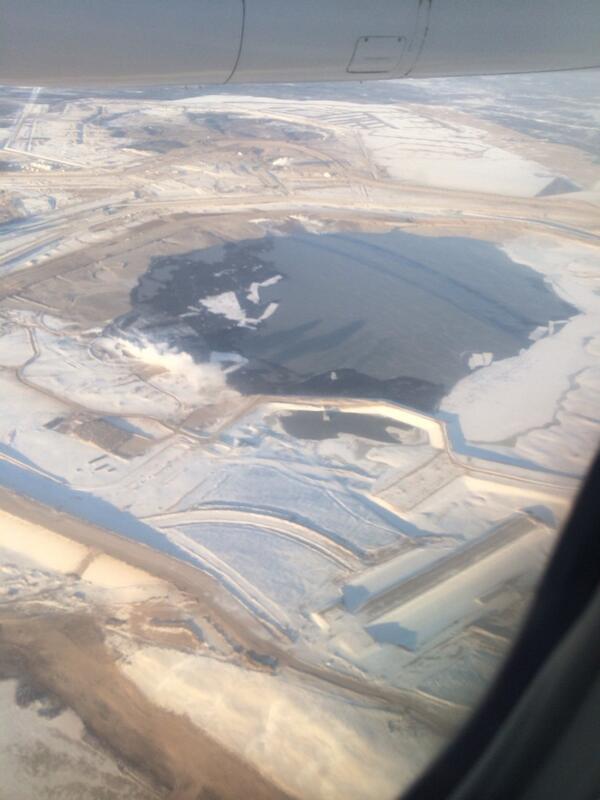Just as the extraction of shale gas
is a controversial issue in the United States, the same is true of oil sands
(also known as tar sands) are in Canada. Both are
considered unconventional sources of fossil fuel energy. As mentioned in yesterday’s blog, the
major oil sands in Canada (also the largest in the world) are located in
Alberta, a province located just north of Montana.
The proposed Keystone XL Pipeline
 |
| Imperial Oil Sands Project: 1 year of operation Source: Doug Vine Twitter Feed |
The two sites that we visited as part of the Pan-Prairie tour illustrated the two ways oil sands are extracted: mining (the older traditional technology) and in-situ drilling (a new technology using a combination of horizontal drilling and “steam assisted gravity drainage”). Reaching both from Edmonton required a plane ride (about an hour) or it would have been a long drive (about the time it takes to get from Pittsburgh to Philadelphia.) See
The mining site we visited was
managed by Suncor. As we drove through
the “boom” town of Fort
McMurray, I was struck by how much this town faced the same challenges as
the smaller boom towns in Pennsylvania.
Fort McMurray had its initial boom when mining began in the 1960s. The population has boomed again as Fort
McMurray serves as a base for oil sand extraction using both technologies throughout
the region. The population in the town is about
77,000 and for the municipality (what we would call a county, it is about
104,000). In 1951, the population was
about 1,000; 1971 about 7,000; and 2001 about 39,000.
 |
| Reclaimed Site Source: Marcus Thibalt Twitter Feed |
 |
| Oil Processing Source: Marcus Thibalt Twitter Feed |
generated seems to be less of a concern than for hydraulic fracturing.
The good news perhaps is that while
20% of Canada’s oil sands reserves can be extracted using surface mining, 80%
of the reserves would be extracted via in-situ drilling. This assessment
of Pembina compares the environmental impact of the two.
 |
| Source: Pembina |
The bottom-line: Not all oil sands extraction is alike and this
nuance needs to be considered in public policy-making both in Canada and the
United States. Personally, I would like
to see some calculations that really make a true assessment of both processes
in terms of their environmental impact relative to traditional oil well
processes. There may well be such an
analysis out there but if not I may try to do it myself when I’m back at
Carnegie Mellon. This I think will give,
from a public policy standpoint, more guidance to US policy-making. In addition, my I believe there are lessons
that can be shared between Pennsylvania and Canada that would increase both
environmental protection and public confidence.
I’ll discuss more on this issue in my next blog.

No comments:
Post a Comment